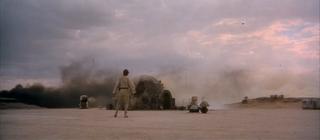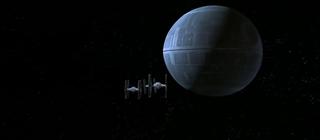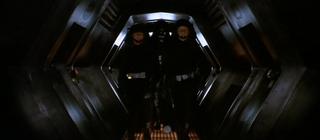There was a subtle change that involves this optical-effects stripe of these two shots:


Sandwiched between these two shots is a wipe from screen left to screen right
Yes, this stripe existed in the ’77 and ’81 versions, however, here’s the change:
24 frames has been added to the tail-end of that stripe—the shot where the TIE fighters fly towards the Death Star. The reason for that comes from Lucasfilm’s decision to have that shot be the last one to end Reel 2, as movies were still being shown via celluloid prints during 1997.
For a better understanding of what I’m about to explain here, you can download this file.
Edit: Link has been changed. Previous one was not working.
https://mega.nz/file/QosB1LAY#LRlEYGE_erIWkSArpVCZTYXakYY4leC03pBYqoX3hUY
It’s a 14-second MKV file with 2 video tracks and 4 audio tracks muxed in—2 DTS-MA HD tracks, a DTS-ES track, and a PCM track.
VIDEO TRACK 1/AUDIO TRACK 1:
This is the 1977 edition of that optical-effects stripe with the ’77 sound mix in 2 channel audio.
Because Lucas added in new material in Reel 3 such as the Mos Eisley sequence, the Solo/Greedo shoot-out, the Solo/Jabba scene, and the Falcon lift-off shot, Lucasfilm had to find a way to balance the length of these two reels when preparing release prints, since each reel can be longer than a 1000 feet of film. Ultimately, Lucasfilm decided to have a splice between the said establishing Death Star shot and this shot of a corridor of the Death Star’s detention center.

When that decision was made, some changes had to be made.
VIDEO TRACK 2/AUDIO TRACK 2: (make sure you switch the video track to number 2, as well as the audio track)
This is the same scene as it’s shown in the 1997 edition, with the additional 24 frames in the optical-effects stripe. In the audio post-production industry, it is not a good idea to have music during a reel change. Because of a projectionist’s off-timing during a change-over between reels in a dual projection set-up, or frames going missing during the assembly and dis-assembly of multiple reels in a single (or platter) projection set-up, these audio glitches may happen during the reel transitions:
- The audience will notice the music’s rhythm being off
- A “pop” sound will occur in the music where it shouldn’t be
So, the audio engineers made an audio drop-out in the music track for technical reasons. Hear that drop-out in the 7-second mark of this video.
And this is where a domino effect begins.
VIDEO TRACK 2/AUDIO TRACK 3:
The ’97 version of that scene—with the extra frames—as seen in the 2011 cut. A new sound mix was created for this version. This time, that silence in the music track was patched-over because John Williams’ music score didn’t cover the extra frames at the end of that Death Star shot, because it didn’t end Reel 2 in the ’77 version. To cover-up that silent hole in the music track, the audio engineers used artificial reverb from the last orchestra note of the Death Star theme
I feel that for the 2011 cut , Lucas should have, at least, restored the original length of that stripe by cutting-off the last 24 frames that he added-on, thereby leaving Williams’ music cue for that scene untouched, since Lucas already trimmed 11 frames from the Solo/Greedo shot-out in the ‘97 cut.
VIDEO TRACK 2/AUDIO TRACK 4:
The music track’s audio drop-out that was created back in ’97 has been retained in concert halls around the world, as evidenced by this 2018 performance of the score by The Baltimore Symphony Orchestra in a Live-to-Projection concert of SW:ANH.
I do not have any documents that proofs of what I say, so this is just a educated guess based on my limited technical knowledge of film, so, take this what you will.